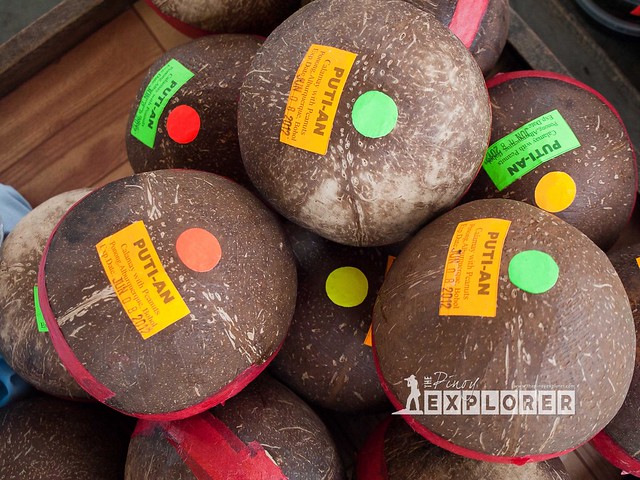
Did you ever wonder what are those goodies encased in coconut shells that are sold in various tourist spots in Bohol? Yes, they are called calamay—a brown, sticky and sweet delightful and irresistible concoction that makes one hanker for more.
With the work that I do, I got the rare chance of meeting our project partners in Alburquerque, Bohol or more popularly called “Albur”—the capital of Bohol calamay. There are other parts of Bohol like Jagna, which also produce calamay but Albur is more popular for its proximity to Tagbilaran and its sheer number of calamay makers—an entire barangay is cooking calamay.
 |
| A calamay with peanuts! I love this combination! |
The making of calamay as a local delicacy of Bohol by the Albur calamay makers dates back to their ancestors. Nobody can tell how many years they have been cooking calamay, but there is only one common answer among them: their grandparents have been doing it since the day they could remember. That alone makes one think how many years this industry has been thriving and ingrained in their culture and heritage.
It is pretty much like a family heirloom, with their cooking secrets handed down to their generation. So, the next natural thing to do is ask the ingredients. It is a mixture of glutinous rice flour (galapong), sugar, and water that is patiently and painstakingly mixed with a long ladle for four long hours. Beyond that, they were too careful of disclosing their family secret. While the calamay of one family tastes pretty much the same with the others, the calamay connoisseurs say there is a big difference. Well, let’s leave it to them, and it is up for the buyers to find out what that difference is. Be that as it may, it is that difference that will make them last in this highly competitive business.
In order for us to fully appreciate this industry (well talking about value chain analysis), we followed them from their homes to their outlet stores in Tagbilaran pier.
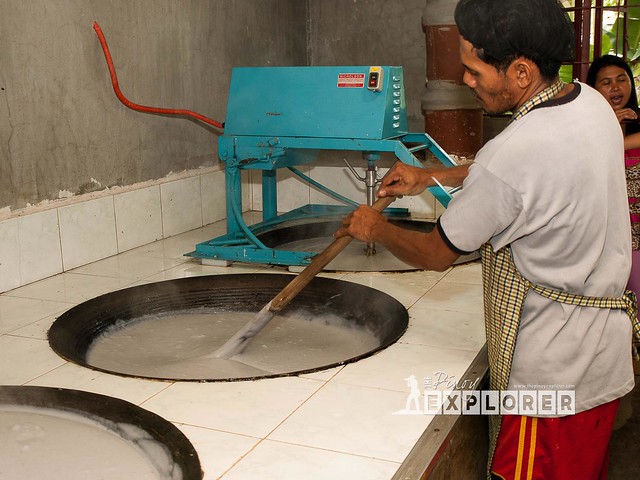 |
| The calamay mixture is being mixed for four hours to maintain consistency. |
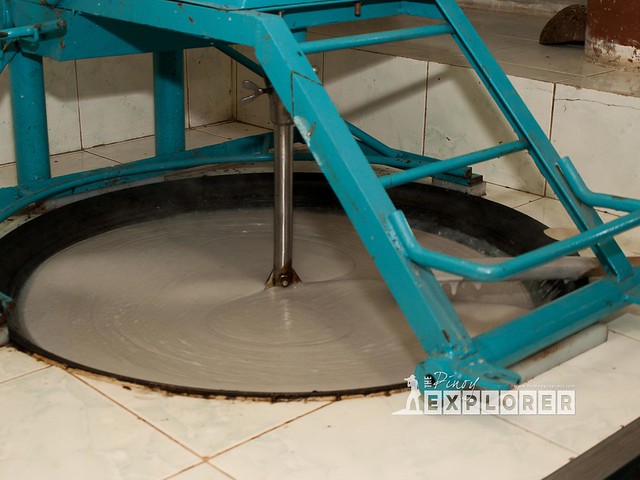 |
| A rotary machine is already available to replace manual mixing. |
 |
| I tried how difficult it is. Yes the mixture is sticky and it takes strong arms and a good amount of stamina to do this. |
We wanted to witness the traditional production process, but we were unlucky to see one. Nonetheless, the process is still the same, differing only in the production area and tools.
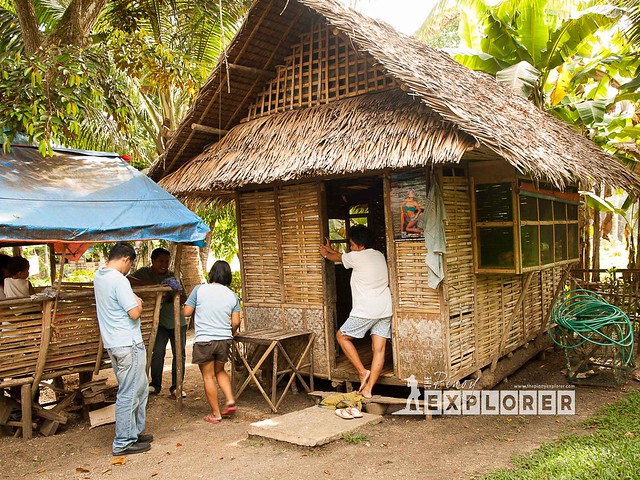 |
| The traditional calamay makers have a separate kitchen hut for their production. |
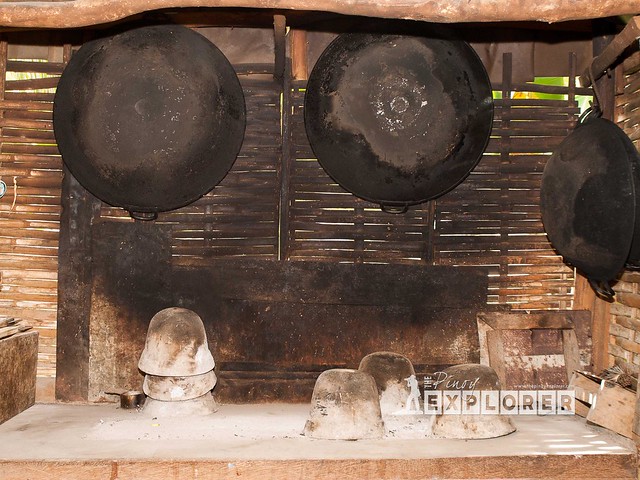 |
| The stove and utensils used. |
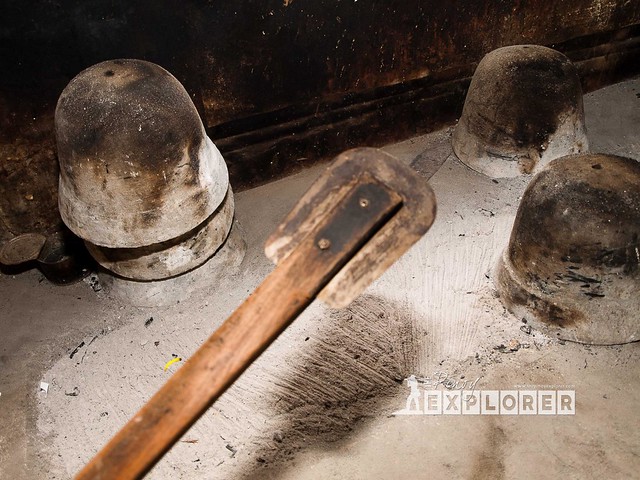 |
| The relative small ladle used for mixing. |
After cooking, then comes the packaging. There are two kinds--coconut shell and plastic containers. Plastic containers are used so that tourists can bring calamay on board a plane. Those in coconut shells would have to be in the baggage. One interesting point about coconut shell packaging is the labor employed.
 |
| Coconut shells are imported from as far as Dipolog--and these coconuts were cut and paired specially for calamay. |
 |
| Women in the barangay have extra income for polishing the shells. It cost P2.00 per pair. |
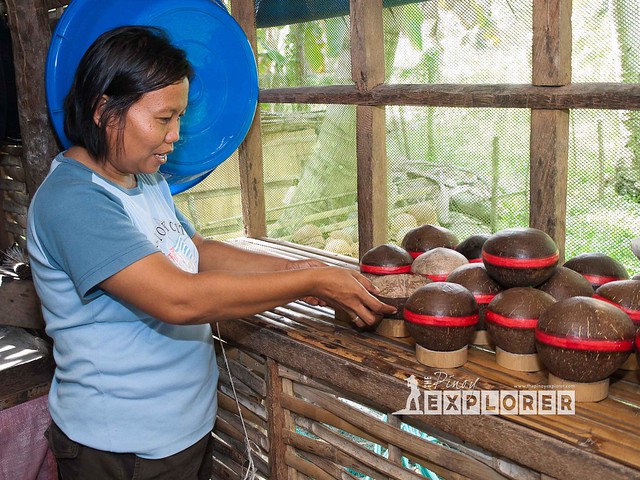 |
| After the shells are polished and washed, the mixture can be poured into them. They put their labels on top. |
 |
| Calamay ready for selling. |
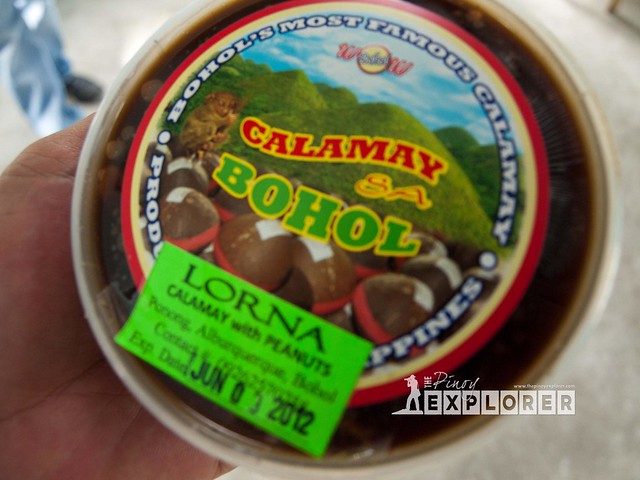 |
| Calamay in plastic containers. |
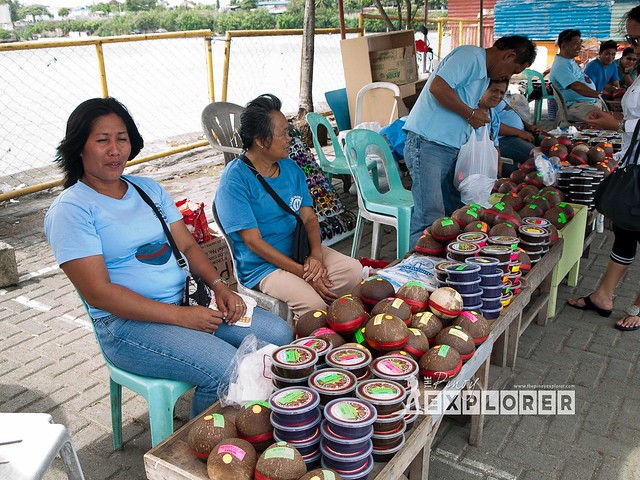 |
| Calamay vendors at the Tagbilaran Pier. They were given the permit to sell in one place instead of acting as touts back in the day. |
There are now variants of the calamay. Some mix it with peanuts and ube (yam) flour. So the next time you buy a calamay, you should buy one from the Albur calamay makers because you are helping a social enterprise to thrive and you will help families send their kids to school, buy their food, and other daily needs.
Read the rest of Bohol posts:
- Eureka! | Bohol's Marfori House
- Tagged | Best of Travel Photos: My Super 7 Shots
- Bohol: Heart of the Philippine Islands
- A D.A.T.E. with G.R.E.A.T. Catigbian
- Rediscovering Panglao's Alona Beach
- DATE Park Adventures | The Canopy Walk and Monkey Bridge
- In transit | Anda, Bohol's White Sand Beach
- DATE Park Adventures | Mountain Slide
- DATE Park Adventures | River Trek
- Bohol | Dimiao's Stone Church
- Bohol | Meeting Ida, Nenet and Moymoy
- Bohol | Valencia's Sto. Nino Church
- Bohol's famed calamay
- Bohol's bahalina
- The honeycomb tombs of Dimiao's Ermita Ruins
_________
This blog is my entry to the Pinoy Travel Bloggers' monthly blog carnival. For September, the theme is "The Visayas Roundup" hosted by, me:

Tweet
Thank you for reading The Pinoy Explorer! All contents of this blog, or otherwise stated, are copyrighted. For syndication, use of articles and photos, send me an e-mail. Thank you!



4 comments :
Gosh ang sarap niyan! May calamay pala sa Bohol.
Edmar, it is similar in taste with that of Candon.
i've always loved calamay...i never fail to buy them for pasalubong or ask for them as pasalubong. great post!
Sarap naman nyan.... nakakmiss talaga mga pagkaing pinoy...!
Post a Comment